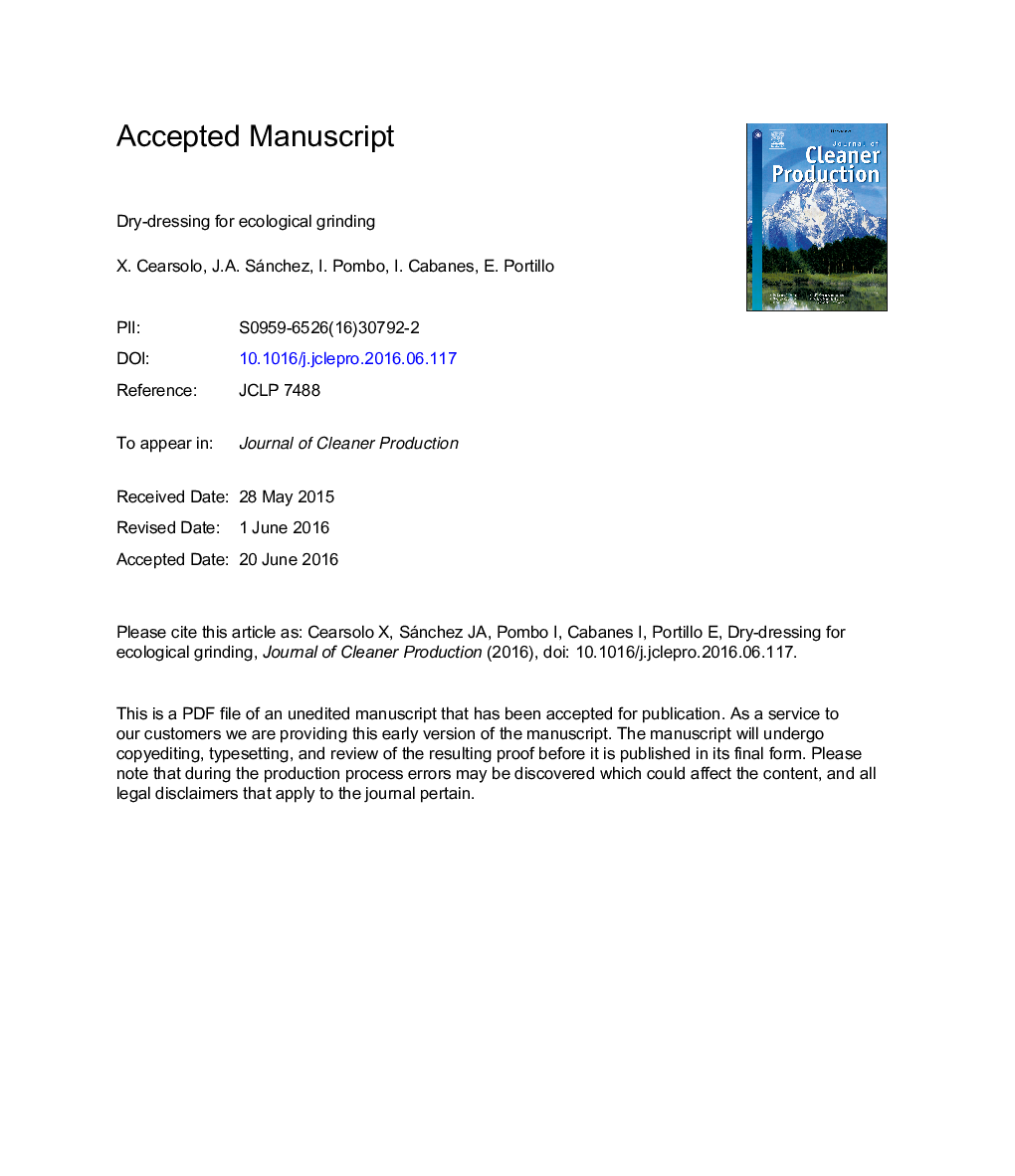| Article ID | Journal | Published Year | Pages | File Type |
|---|---|---|---|---|
| 8101240 | Journal of Cleaner Production | 2016 | 45 Pages |
Abstract
In order to comply with strict environmental regulations, a current challenge for industry is the need to reduce, or, where possible, completely eliminate the use of cooling and lubricant fluids. In the case of a high added-value technology such as grinding (typical in aerospace, biomedical, and other high-tech sectors) the damaging effects of fluids on the environment, humans, and the economy have been thoroughly described. Grinding is thus considered as an environmentally-unfriendly manufacturing process, and in recent years, an increasing amount of research has focused on the removing the use of fluids in the grinding process. However, none of these studies have tackled the problem of the unavoidable use of fluids in the auxiliary operation of wheel conditioning, known as dressing. Ecological and sustainable grinding technologies require advances in the removal of fluids in dressing. In this paper, a novel proposal for dry-dressing is presented. First, experimental work shows the need for effective cooling (as provided by grinding fluids) when dry-dressing is carried out. In this case, when using industrial steel tool-holders the temperature in the diamond tool can be over 973 K during dressing, leading to loss of mechanical properties and accelerated wear. It is proposed then to use copper in the tool holder instead of steel, so that the thermal conductivity can be largely improved. With this approach, temperatures in the diamond tool can be kept below 700 K (reduction of about 35%), increasing thus wear resistance. These findings have been confirmed by SEM observations and by measurements of dressing power consumption under different dressing conditions and wheel specifications. Thermal deformations in dry-dressing can be as much as 10 times higher than when cooling with conventional grinding fluids. It has been shown that thermally induced deformations can be kept below 2 μm by assisting the operation with a jet of cold air (253 K) obtained from a Vortex tube. This new approach of dry-dressing can be readily implemented at low cost in industrial grinding machines.
Related Topics
Physical Sciences and Engineering
Energy
Renewable Energy, Sustainability and the Environment
Authors
X. Cearsolo, I. Cabanes, J.A. Sánchez, I. Pombo, E. Portillo,
